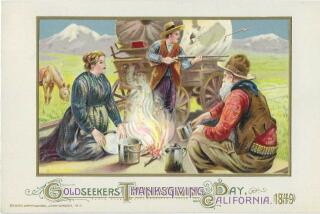Exploring Cultural Implications of Shelter
The American holiday of Thanksgiving shares Old Testament roots with the ancient Jewish harvest festival of Sukkot, celebrated in mid-autumn. Both combine elements of gratitude and festivity. That makes the Skirball Cultural Centerâs exhibition âTemporary Quarters: Artists Build for Shelter and Celebrationâ an event of general cultural interest.
The showâs artistic face, however, is more problematic.
In the Book of Leviticus, believers are instructed to âlive in booths seven daysâ after bringing in the crops, âin order that future generations may know that I made the Israelite people live in booths when I brought them out of the land of Egypt.â (The word âboothsâ sounds a little odd in biblical context. Itâs a modern simplification of the original âtabernacles.â)
Early rabbis detailed the construction of a proper, singular sukkah. It was to have at least three walls and be large enough to accommodate sleeping and eating. (Walls are often decorated with fruits and vegetables.) Roofs were required to be of such naturally grown materials as straw, twigs or fronds, placed loosely so the stars would be visible.
The main exhibition consists of three contemporary versions of these makeshift structures designed by artists Sam Erenberg, Marlene Zimmerman and Therman Statom. The exhibition curator was the Skirball centerâs Monica Billet.
Erenbergâs âtabernacleâ is fundamental: four walls, each marked by a small triangular opening. The exterior is painted with extremely subdued imagery suggesting a serene sky, galactic void, geysers and a tree of life. An entry was made by basically slicing away one corner and moving it inside. There it acts as a screen for a waist-high black dais bearing a shallow conical metal basin that appears to be brass or gold. Interior walls are stained wood devoid of decoration except for the pattern made by squared supporting struts. A partial effect of ritual introspection is seriously diluted by a largely open ceiling.
Zimmerman is billed as a folk artist. Her âJoyful Visions: An American Sukkahâ is three walls with open front and a roof of twigs over a wood grid. The back wall is covered with small child-style pictures, giving the partial effect of a quilt. The artist arrived at them by contacting people through the Internet, soliciting photographs of their sukkahs. She received dozens of responses from around the country. These are documented in little books resting on facing benches. Itâs a charming idea.
âTo Dwell in Glass Housesâ is Statomâs contribution. The most lyrical of the three, itâs built of glass units both clear and translucent. Silvery metal palm fronds suspended from the gallery ceiling seem to be drifting down to form a covering. The inner space is festooned with painted fruit and all manner of glass artifacts.
A couple of ancillary pieces include Benny Ferdmanâs âHonored Guests.â Itâs a gallery full of the trappings of play and picnicking that invite visitors to participate. Then thereâs Jerry Novorrâs lacy paper cutout, âThe Goodly Fruit,â which looks like a valentine to thanksgiving.
The exhibition can reward viewers on a number of counts. Itâs educational. Thereâs an engaging gaggle of related kid-art from a Skirball workshop. Shelters trigger associations with universal aspects of human experience, from peril to deliverance. There are sympathetic associations with present problems of the homeless living in crates.
All the same, for anyone attuned to pure aesthetic experience, the exhibition is liable to seem constricted and incomplete. It misses the level of formal and expressive dramatization required to carry a work from being understandable beyond an associative and symbolic level. Without it, the art remains informative rather than eloquent.
Maybe this should come as no surprise. Thereâs a serious internal contradiction in the idea of trying to graft an aesthetic steeped in subversion and innovation onto a canon based on preservation and familiarity. Itâs so hard to bring off, the list of successes isnât much longer than Le Corbusierâs church at Ronchamp, Matisseâs chapel at Vence and the Rothko chapel in Houston.
* Skirball Cultural Center, 2701 N. Sepulveda Blvd.; through Jan. 4, closed Mondays, (310) 440-4500.
More to Read
The biggest entertainment stories
Get our big stories about Hollywood, film, television, music, arts, culture and more right in your inbox as soon as they publish.
You may occasionally receive promotional content from the Los Angeles Times.










